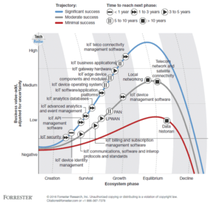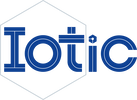 Figure 1: Forecast of IoT Growth © Forrestor Research Figure 1: Forecast of IoT Growth © Forrestor Research Introduction Hacking is a profession; the people attacking our systems from cyberspace are doing it for a living. Their return on investment is high and their risk of being caught is low. This makes them highly motivated. They are well educated and understand security technology; even the least capable adversary can cause significant damage to a business and its reputation owing to the high availability of hacking tools. Meanwhile, the significant business opportunity represented by the IoT has the potential to transform business models by moving from one-time product transactions to ongoing product-as-a-service relationships, optimise utilisation of physical and financial assets, and to create new forms of customer engagement. So as businesses increase their focus on the potential of IoT, the need for knowledgeable C-Level executives to navigate the emergent sector securely and confidently will lead to the creation of a Chief IoT Officer at board level (Machine Research). Security concerns have played a role in tempering enthusiasm for the long-hyped opportunity of IoT. In 2015, Forrestor predicted that 82% of businesses would be using IoT applications in 2017. By Q1 2017, those figures have been adjusted to reflect that as IoT is a “business-led trend,” only 23% of enterprises use the IoT, with another 29% planning to do so within 12 months. The concern is well founded: the IDC reported that by 2018, 66% of networks will have an IoT security breach and by 2020, 10% of all attacks will target IoT systems. It is already happening in M2M, with the 2013 hack in the US of Target’s heating, ventilation and air condition systems in its stores leading to the theft of 40 million credit card numbers. If we can meet the security challenges that threaten the IoT, then we can unlock potential for businesses to take advantage and emerge as significant players in the 21st century. Securing connected devices The RSA conference of 2016 was blunt: “IoT will crash and burn if Security doesn’t come first”; and, because of the legacy of businesses’ data and digital landscapes, attack surfaces are vast. As Capgemini’s Digital Transformation team noted, most objects or systems that are now connected to the Internet were not designed to be secured in a connected environment. Meanwhile, the products which were designed to be connected have been reasonably secured for that purpose or use. However, and as an example, applications connected through wireless plug-in devices – which may not even require authentication – have led to devices become vulnerable to cyber threats and, in particular, Distributed Denial of Service (DDoS) attacks, such as the 2016 DDoS attack on Dyn, the Internet infrastructure company, led to massive disruption to service across Europe and the US with report that the attack was part of a genre aimed at IoT devices using the Mirai botnet. These attacks are at the forefront of security concerns for the emergent IoT and form one of the reasons why Iotic Space is built the way it is to rebuff this threat. DDoS attacks are not possible in Iotic Space. As outlined above, these attacks are targeted at things that are on the public Internet, often a business’s first brush with the IoT as projects and functions look to exploit ever-expanding internet-enabled products and consumables. The connected things are often attacked using “swamping” and password dictionary attacks. Because of the double virtualisation built into Iotic Space and the “ioticising” that occurs when a real thing (sensor or device) becomes an Iotic Thing, there is no analogue for this kind of attack within Iotic Space. The governance layers within Iotic Space formed by the Registrar overseeing its Iotic Containers, communicate over HTTPS and have an introductory, brokered public/private key interchange before any communication can occur. Consequently, any DDOS attack is blocked at the Transport Layer. Any Thing must come into Iotic Space through the agent API. This only communicates with an AMQP broker, not the Container itself. In order to talk to the AMQP broker, the Thing seeking a connection has to present a user ID and password which are assigned to it by the system. We have built throttling protection into AMQP, so that even if a DDOS-style attack was not blocked at the Transport Layer (which it would be), the mass outages and denial of service described in the article are still prevented. Any message from a Thing, a Container or the Registrar is cryptographically signed with a token (so can be traced). Each message has a sequence number to prevent replay attacks. All messages are encrypted using TLS 1.2. Apart from the AMQP brokers, there are publicly available sites that form part of the extended Iotic Space system; namely the Container and Registrar web applications. Both sites are WordPress sites with added security plugins. They have no relation to any Iotic or real Thing, do not store any of the security information above, and only store users’ names and email addresses. The storage of any users’ passwords is encrypted. Identify Challenges DDoS attacks on connected devices are of course not the only threat. Capgemini advised in 2016 that greater collaboration across integrated teams of competencies to model future IoT services and processes was vital. But, how can we model for a future that has not yet arrived? IoT standards remain, at best forecast, over the horizon (see Figure 1) with the adolescence of the IoT highlighted in Forrestor’s TechRadar™: Internet Of Things Security, Q1 2017 report, which flagged that Internet of Things (IoT) technologies are immature. Most of the 19 IoT technologies identified in the report are in “Survival and Growth phase today”. Standards long identified as the security solution are “nascent, as vendors are only a couple of years into the process of creating general-purpose interoperability standards.” But we don’t need to wait for standards. The virtualisation and the use of digital twins and digital avatars will continue to proliferate (Machina Research). However, to increase their usefulness we need to blend both the real and the virtual abstraction to allow for experimentation, exploration and investigation. “Just start” modelling means that Iotic Space works without the need for “baselining”, and can be made available to your data and digital landscape quickly and efficiently. Even complex environments can be modelled, tested and protected in timescales measured in days not months. On Iotic Space, digital twins of systems and processes can be created, with “real” systems virtualised to sit alongside and be substituted in and out for their digital twins with no costly or time-consuming redesign. Attack vectors can be analysed on virtualised architectures and counter measures, specialist software and analyses tested and refined. Hardware concerns In Wind River’s much touted briefing from 2015 “Security in the Internet of Things”, challenges were identified around secure booting, access control, device authentication, firewalling and IPS, and updates and patches, all of which are valid challenges. However, the solution is not, as identified, an end-to-end Operating System with security built in, but a true Internet of Things without command and control hierarchies that lead to systemic weaknesses. Decentralising through an abstraction layer as advocated by Iotic Labs enables scalable solutions to the constantly changing complexity of the IT environment in the IoT age. As Geoff Web outlined in his article “Adapting Security to the Internet of Things” a disaggregated approach allows for the “Las Vegas” model of security, which focuses on tracking specific signals that indicate suspicious behaviour at an individual actor or thing level, rather than by trying to keep track of an entire ecosystem. Metadata allows us to record, understand and infer information about the identity of a device, thing or feed connected to Iotic Space; and our understanding is based upon ontologies, behaviours, catalogues and semantic context of how it should behave. We can therefore set simple triggers for warning and response if something unusual or suspicious occurs. This ability to track and identify helps security professionals keep the IoT secure and, in turn, enable secure interaction with products and services. Use the best As the IoT landscape evolves and changes, and as business needs, foci and priorities shift, it is vital that any IoT security can adapt to meet the challenges of an as-yet unwritten future. To meet these challenges, organisations will need to be able to select best-in-class products, services, systems, platforms, and analytical and AI tools, combining them to match best-practice principles and push for competitive advantage. Iotic Space is an environment enabling interoperability between anything and any Thing. The double virtualisation and abstraction that enables any Thing to interact with any other Thing, subject to correct access controls and brokerage, allows IT professionals and system architects to evolve their digital and data landscapes iteratively over time, and without being locked to a single service provider or technology. Capital expenditure can be mediated through the creation of hybrid systems that are updated only as needed and in line with business objectives. In an emerging world of:
Currently the fractured nature of the landscape is inhibiting adoption and, in turn, limiting the ability of security and IT professional to develop and implement robust defensive positions and capabilities. Conclusion Toptal identified five elements that need to be borne in mind when considering IoT security:
The use of controls as well as feeds enables firmware and software patches and updates to be controlled and managed. Meanwhile flexible interactions enable systems architects to adapt and update systems and processes within the environment with best-in-class analytics, software, hardware and platforms. It is core to the environment that both the Provider and the Consumer in a data-sharing relationship are known entities within Iotic Space. This enhances trust and security, as only account holders with known credentials can access data. No data is stored in Iotic Space – this is the antithesis of a Big Data solution – and a less attractive proposition for malicious targeting. Metadata and Data are separated. This enhances security, as the data stream is meaningless without knowledge of the metadata. Footnotes 1. https://www.forrester.com/report/Predictions+2016+IoTs+Impact+Inside+Companies/-/E-RES122807 2. https://www.forrester.com/report/TechRadar+Internet+Of+Things+Security+Q1+2017/-/E-RES117394 3. https://www.idc.com/research/viewtoc.jsp?containerId=259856 4. https://krebsonsecurity.com/2014/02/target-hackers-broke-in-via-hvac-company/ 5. http://www.reuters.com/article/us-target-breach-idUSBRE9BH1GX20131219 6. http://searchcio.techtarget.com/news/4500278035/RSA-Conference-2016-IoT-will-crash-and-burn-if-security-doesnt-come-first 7. https://www.capgemini.com/resources/securing-the-internet-of-things-opportunity-putting-cybersecurity-at-the-heart-of-the-iot 8. https://www.theguardian.com/technology/2016/oct/21/ddos-attack-dyn-internet-denial-service / https://www.wired.com/2016/10/internet-outage-ddos-dns-dyn/ 9. https://www.capgemini-consulting.com/digital-strategy-review-9 10. https://machinaresearch.com/news/machina-researchs-predictions-for-iot-in-2016/ 11. http://www.windriver.com/whitepapers/security-in-the-internet-of-things/wr_security-in-the-internet-of-things.pdf 12. https://www.netiq.com/communities/cool-solutions/netiq-views/adapting-security-to-the-internet-of-things/ 13. https://www.toptal.com/it/are-we-creating-an-insecure-internet-of-things
0 Comments
Your comment will be posted after it is approved.
Leave a Reply. |
AuthorS
Ali Nicholl Archives
November 2019
Categories |
Iotic Office North America
|
|

 RSS Feed
RSS Feed